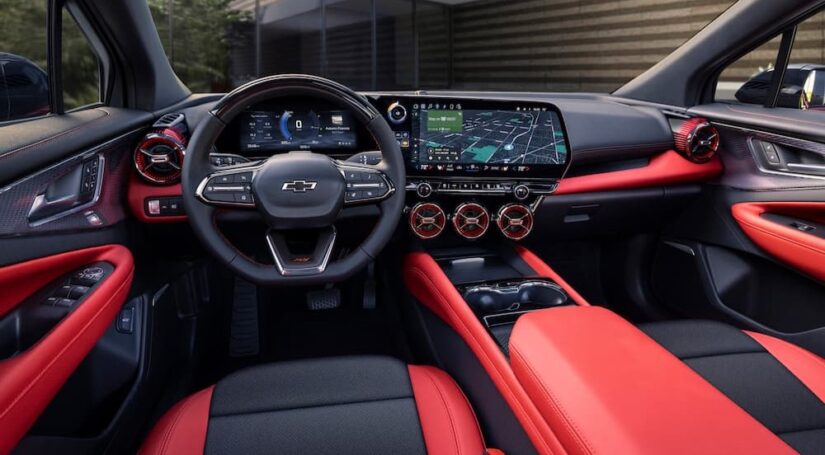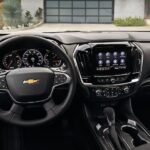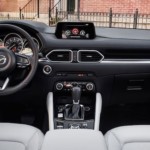A century ago, cars were designed to get us from Point A to Point B, and drivers didn’t expect them to do much else. As the decades rolled by, comfort and convenience features like air conditioning and audio systems were introduced as luxuries and quickly became standard fare. These days, just about any vehicle on the market is expected to be both a car and a computer, with an infotainment system that monitors diagnostics, provides entertainment, and has a big screen where you can control your settings and see live video feed from one or more cameras. Some systems also have built-in navigation, but many offload this task—and several others—onto your smartphone by adding Apple CarPlay or Android Auto connectivity and letting your phone’s software handle directions, entertainment, communication, and more.
The trend line has been pretty simple over the past decade or so. First, Apple CarPlay and Android Auto were added as optional features or perks for upper-level trims (either one at a time or both at once). Then, they became standard features even on base models. When wireless smartphone integration came along, it had a similar pattern: first, a luxury bonus, now a much more common feature to see on entry-level trims. But in recent years, we’ve seen signs of this pattern being disrupted as big tech looks to take over the dashboard entirely.
The big companies behind these features don’t seem content to be add-ons any longer. Google (the tech giant behind Android) has unveiled its own operating system for vehicles, and Apple has signaled that it may have its own version in the works. While Amazon is less of a major player so far, it may soon want to expand beyond “Alexa Built-in” as well. Will this competition create better onboard software for drivers or be a thorn in our side? Let’s dig in and see what the current trends look like and what they might mean for you.
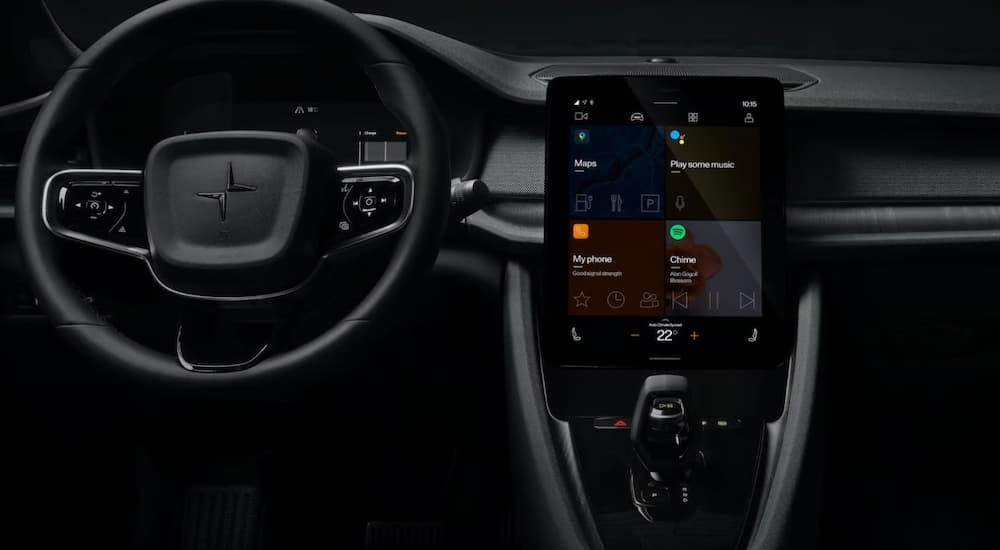
Android Auto vs Android Automotive
First, let’s take a look at Google’s vehicle operating system. Confusingly, this system is called Android Automotive, so it’s understandable that some people think it’s the same thing as Android Auto. But while Android Auto is a single app in your vehicle’s infotainment system, Android Automotive is the infotainment system. Think of it like this: Android is an operating system that has different versions for different devices. There are different versions of Android for desktop computers, smartphones, tablets, and smartwatches; now there’s one for cars.
The first vehicle to use the Android Automotive system was the 2020 Polestar 2, an EV that’s part of Volvo’s Polestar brand. In many ways, Android Automotive isn’t that different from other infotainment systems. You use a central touchscreen to navigate different apps, control audio, take phone calls, etc. But instead of offering Android Auto as one of these apps, features like Google Maps and Google Assistant are built into the vehicle itself. With an EV like the Polestar 2, this can be helpful. The Maps app, for instance, can access your vehicle’s battery level and look for charging stations that are within range. As of the 2024 model year, the Polestar 2 still offers Apple CarPlay connectivity, though your iPhone’s apps won’t be able to interface with the vehicle in the same way.
Apple’s Ambitions
As of now, there isn’t an Apple equivalent of Android Automotive, but that could change soon. At the Worldwide Developers Conference in June 2022, Apple previewed the “latest generation of Apple CarPlay.” But rather than just updating graphics or making the system faster and smoother, this preview showed an interface that uses Apple apps to control vehicle functions like climate control and even display the speedometer. This led to rumors that Apple may be designing its own EV, but of course, an interface like this could also be used by existing automakers, as has been the case with Android Automotive.
Another Brick in the Wall Between Apple and Android
Looking at these developments, one potential issue becomes clear: it’s likely to create a schism in the automotive industry. Right now, most vehicles offer both Apple CarPlay and Android Auto, so you can buy pretty much any car, no matter what smartphone you use. But if these trends continue, we could enter a world where Apple users and Android users have to buy separate vehicles the way they already buy different laptops and smartwatches. That’s not great for consumers because it limits your options. While this future may seem distant, it’s already starting to take shape.
GM’s Future EVs Won’t Have Apple CarPlay
Earlier this year, GM (the parent company of Chevrolet, GMC, Buick, and Cadillac) announced that it will no longer offer Apple CarPlay in its electric vehicles, starting with the 2024 Chevrolet Blazer EV. Since GM has been collaborating with Google since 2019, this announcement seems almost inevitable. The company claims that the move is necessary in order to allow all of its apps to have access to vehicle data like battery life. But as we’ve seen with the Polestar 2, it’s still possible to offer Apple CarPlay as a feature for those who prefer to use it.
To help soften the blow, GM has assured drivers that this change won’t apply to gas and diesel models (though the company plans to stop producing those by 2035) and that Apple CarPlay will continue to work in vehicles that already have it. But while this announcement may have a limited scope today, it’s quite likely to have far-reaching consequences in the future.
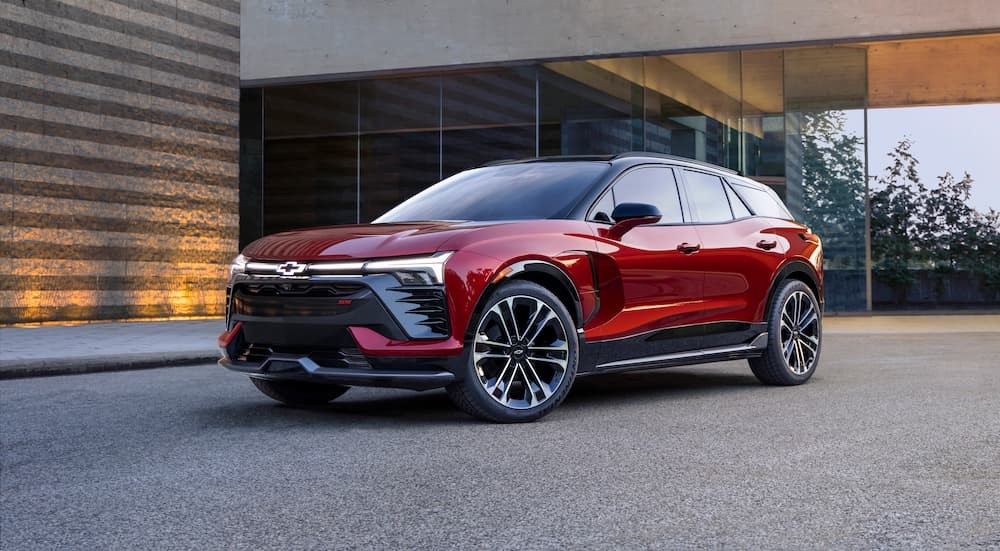
The Potential Benefits
We don’t want to be all doom and gloom about what these changes might bring, so let’s take a moment to consider some of the upsides. With systems like Android Automotive, you can access apps like Google Maps without having to hook up your phone to the vehicle’s infotainment. Drivers with phones that are older or otherwise not compatible with Apple CarPlay and Android Auto will be better connected while driving. There have long been issues with phones not always connecting right away or causing problems with other infotainment functions, which will probably be solved by having a system that doesn’t rely on a connected smartphone. And the ability of the navigation system to know your remaining range is a valuable feature that can come in handy.
The Potential Problems
As we already mentioned, dividing automakers into Team Apple and Team Android would limit choices for consumers who are already locked into one interface or the other. Of all Americans who own a cellphone, about half have an iPhone, so this would essentially split drivers into two camps instead of letting everyone choose from the wider pool of options. In addition to this, having an integrated system that doesn’t rely on your phone has a few risks. Features that are currently free could become subscription models, making vehicles less useful for those who can’t afford to pay monthly fees. And if a vehicle’s system goes out-of-date, drivers who rely on built-in systems could be left in the lurch. We already saw a similar situation play out when the 3G network started getting phased out in 2022, which left models from several automakers suddenly incapable of providing services like remote start, Wi-Fi, and built-in navigation.
As We Go Forward
While tech companies are excited about controlling entire vehicle infotainment systems, many drivers are less enthused. If you’re worried about the issues that this trend might cause, then make sure to take a close look at the tech features of a model before you buy. Vote with your dollars for automakers who are providing features for both Android and Apple users. While we can’t know for certain what the future brings, it always helps to stay informed and use that information wisely.
